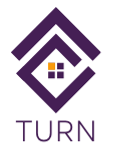The Rationale for The Opportunity Hub Concept
Serious social problems such as poverty, low education levels, crime, and a host of health issues are often interrelated. They frequently reinforce and compound each other. Many organizations are addressing one or more of those issues, but typically each organization is focused on only a piece of a more complex set of problems. The public sector tends to do this through large, bureaucratic silos, while the not-for-profit sector is incredibly fragmented. Many organizations do good work. Unfortunately, though, fragmented and siloed approaches to complex problems seldom lead to lasting impacts.
Even when services are available, they might not be accessible to many who could benefit from them. While it’s bad news when services cannot be readily accessed, accessibility is not necessarily good news, given the fragmentation of the range of services that might be needed.
The importance of holistic, often whole-family approaches is supported by much of the research on social determinants of health. For example, the University of Wisconsin ranks health outcomes for nearly every county in the United States, giving equal weight to length of life and quality of life. Those rankings are based on the physical environment (including education, employment, income, family and social support, and community safety); clinical care; and health behaviors (e.g., tobacco use, diet and exercise, alcohol and drug use, sexual activity). Eighty percent of the total score is based on factors other than clinical care.
That is consistent with other research that has concluded, “Clinical care only accounts for a small part – an estimated 10-20 percent – of the contributing factors affecting population health. The rest is determined by social, behavioral, and environmental factors such as education, housing, and income, which interact dynamically to affect the health and well-being of individuals and communities.” (Nyna Williams and Adam Thompson, Lost in Translation: The Importance of Social Determinants of Health Data from the Patient Perspective, Mathematica, July 18, 2019.)
Somewhat similarly, the Substance Abuse and Mental Health Services Administration (SAMHSA) describes the major dimensions that support recovery for individuals with substance use disorders as:
Health – overcoming or managing one’s disease(s) or symptoms and making informed, healthy choices that support physical and emotional well-being.
Home – having a stable and safe place to live
Purpose – conducting meaningful daily activities (such as a job) and having the independence, income, and resources to participate in society.
Community – having relationships and social networks that provide support, friendship, love, and hope.
SAMHSA also emphasizes that the process of recovery is supported through relationships and social networks.
The Opportunity Hub model strives to overcome the limitations of fragmented and siloed approaches to social problems. Those organizations that are part of an Opportunity Hub will need to see themselves as part of a larger “whole” in which they do what they do best and work with others with complementary capabilities and other resources. In that way, they help make 2+2 = much more than 4.
The Scope of The Concept
A well-designed Opportunity Hub will make available a wide array of services and opportunities geographically positioned for easy access, creating a cluster or hub of public, private, and not-for-profit resources that could include health and wellness; social services for children, youth, and families; education, training, employment, and other economic enhancing connections; and other quality of life improvement opportunities. The overall approach will be for the organizations at the hub to leverage their capabilities to maximize positive impact for each individual and household. Ultimately, the goal is to reduce poverty, improve access to diverse opportunities and build prosperity among residents and the community.
Additional benefits of this approach will be the strengthening of cross-sector relationships and greater knowledge and appreciation of the roles people in different types of organizations play. Over time, those stronger relationships can help strengthen the fabric of the entire community.
Staff could also arrange for, through contracting or direct employment, a centralized group of “navigators” who will help connect individuals and families with services they need and provide continuity of a relationship with those persons over an extended period. Some individuals might need services not available at the Opportunity Hub, and navigators will be knowledgeable about other services in the larger community.
Individuals coming to the Opportunity Hub may choose whether to contact organizations in the hub directly or go first to the navigators. The latter would be particularly helpful to those persons who don’t know where to go or who have multiple needs.
There are no perfect solutions and no solution that works for everyone. However, in many situations, wraparound services – holistic and, where applicable, whole-family – can be an effective approach to reducing multigenerational poverty and numerous other social problems.
Services that could be addressed by navigators as needed include:
Housing
Healthcare and wellness
Education and training
Employment
Transportation
Food
Youth opportunities
Childcare and early childhood development programs
Other family services
A community/neighborhood-based Opportunity Hub can provide regular opportunities for representatives of each organization it houses to collaborate seeking ways to maximize their collective impact. Each organization will be encouraged to:
Understand its context. How do its services relate to what others around it are doing?
Consider how it can have maximum long-term impact and how it might add unique value.
Consider how it might leverage its resources and capabilities with those of others to maximize overall impact.

